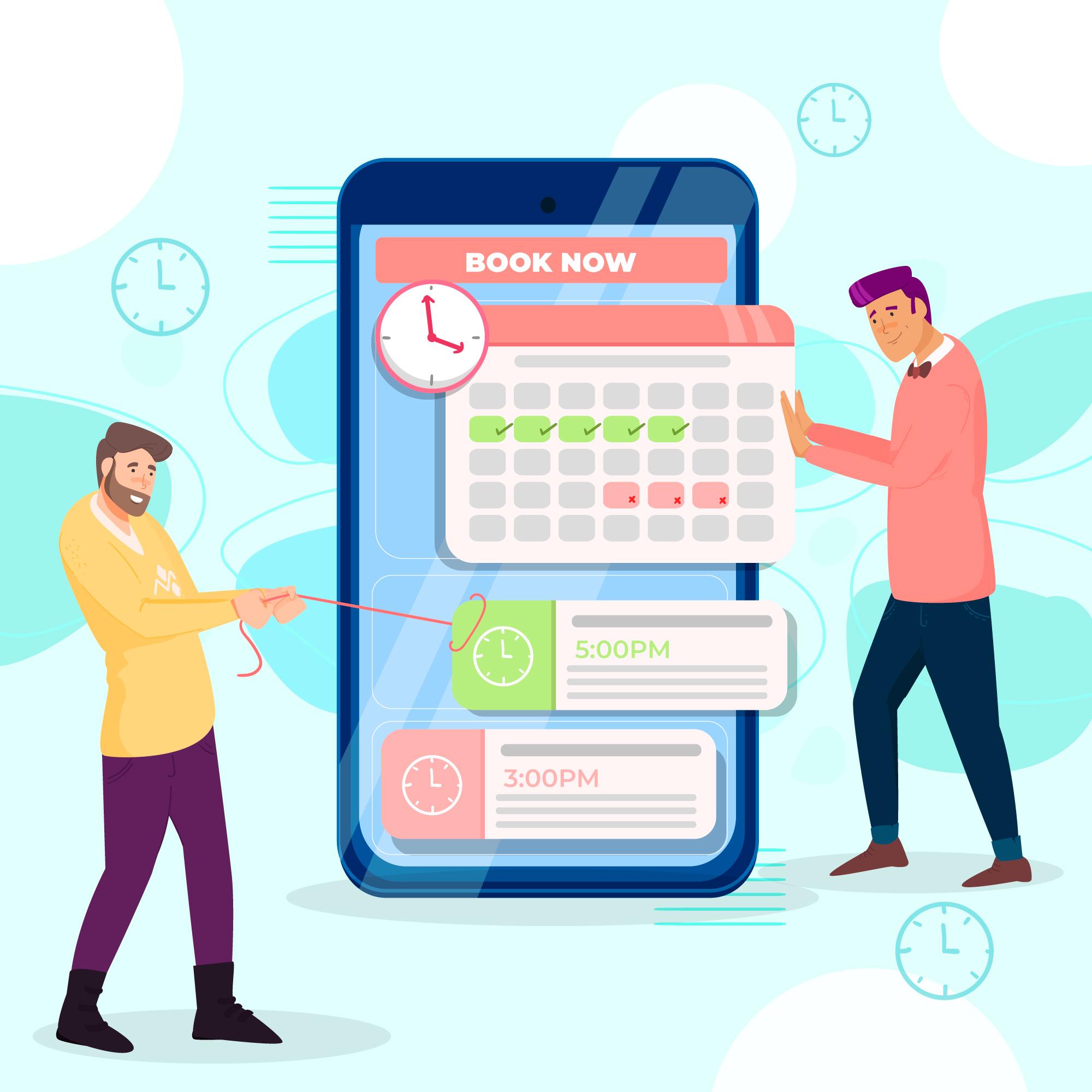Table of Content
Try Vizitor for Free!

Mon, Jul 15, 2024
Read in 15 minutes
Introduction
Did you know that businesses and organizations lose an estimated $500 million annually due to inefficient visitor management processes? This staggering statistic highlights the crucial need for modern, streamlined solutions. Visitor management systems (VMS) have become essential tools for managing and tracking visitors securely and efficiently. These systems replace traditional paper logbooks, offering digital solutions that enhance security, streamline processes, and improve visitor experience.
Among the various types of VMS, kiosk-based visitor management systems stand out for their user-friendly and automated approach. These systems utilize self-service kiosks where visitors can easily check-in, provide necessary identification, and receive visitor badges without needing direct human assistance. This not only speeds up the process but also reduces the burden on reception staff, allowing them to focus on more critical tasks.
The importance of kiosk-based visitor management systems cannot be overstated. They significantly enhance security by ensuring accurate visitor data collection and providing real-time notifications to hosts. Additionally, they improve operational efficiency by reducing wait times and automating administrative tasks. Moreover, these systems contribute to a professional and welcoming environment, leaving a positive impression on visitors. Embracing such technology is a forward-thinking approach that ensures both safety and convenience in today’s fast-paced world.
What is a Kiosk-Based Visitor Management System?
A kiosk-based visitor management system is a modern solution that helps businesses manage and track visitors using self-service kiosks. Instead of signing in on paper logs, visitors use a digital touchscreen kiosk to register their visit. Here are the core features and benefits:
Self-Service Check-In: Visitors enter their details, such as name and purpose of visit, directly into the kiosk.
Badge Printing: The system can print visitor badges with the visitor’s name, photo, and other relevant information.
Host Notifications: When a visitor checks in, the system can automatically notify the host (the person they are visiting) via email or text message.
Data Security: All visitor information is stored securely in a digital format, protecting sensitive data.
Real-Time Monitoring: The system provides real-time data on who is in the building, enhancing security and accountability.
How it Differs from Traditional Visitor Logs
Efficiency: Kiosk-based systems automate the check-in process, reducing waiting times and eliminating the need for manual entry.
Accuracy: Digital systems minimize human errors, ensuring that all visitor information is correctly recorded.
Security: Unlike paper logs, digital systems can store data securely and restrict access to authorized personnel only.
Professionalism: Digital kiosks present a modern and professional image to visitors, enhancing their overall experience.
Types of Businesses and Organizations That Benefit
Corporate Offices: Enhances security and streamlines the visitor process in busy office environments.
Healthcare Facilities: Ensures accurate tracking of visitors, which is crucial for maintaining a safe and controlled environment.
Educational Institutions: Helps schools and universities manage the flow of visitors, ensuring student safety.
Government Buildings: Improves security and efficiency in places where tracking visitor access is critical.
Event Venues: Speeds up the check-in process for large numbers of attendees, providing a seamless entry experience.
A kiosk-based visitor management system is a smart and secure way to manage visitors, providing numerous benefits over traditional methods. It is especially valuable for organizations that prioritize security, efficiency, and a professional image.
Key Features of Kiosk-Based Visitor Management Systems
A kiosk-based visitor management system (VMS) offers a range of advanced features that streamline and enhance the visitor experience while ensuring robust security and compliance. Here are some of the key features:
1. Registration and Check-In Process
The registration and check-in process is simple and efficient with a kiosk-based VMS. Visitors use a touchscreen kiosk to enter their details, such as name, contact information, and the purpose of their visit. The Touchless Visitor Management System can also capture photos, scan IDs, and collect signatures if required. This automated process reduces wait times and eliminates the need for manual entry by reception staff, allowing for a smooth and hassle-free check-in experience.
2. Badge Printing and Customization
Once registered, the kiosk-based VMS can automatically print visitor badges. These badges typically include the visitor’s name, photo, the date and time of their visit, and the name of the host. Customization options are available, allowing organizations to include their logo, specific colors, or additional information such as Wi-Fi access details or safety instructions. These badges not only help in easily identifying visitors but also enhance security by ensuring that only authorized individuals are present in the facility.
3. Notification Alerts for Hosts
A crucial feature of kiosk-based VMS is the ability to send automatic notifications to hosts when their visitors check-in. These notifications can be sent via email, SMS, or through internal messaging systems, providing real-time updates. This ensures that hosts are promptly informed of their visitor’s arrival, improving communication and reducing waiting times. It also allows hosts to make necessary preparations to welcome their guests.
4. Data Security and Compliance Features
Data security is paramount in a kiosk-based VMS. All visitor information is securely stored in encrypted databases, protecting sensitive data from unauthorized access. The system can also ensure compliance with various regulations such as GDPR or HIPAA by providing features like consent forms and data retention policies. Audit trails and reporting capabilities allow organizations to monitor and review visitor data, ensuring transparency and accountability. Additionally, regular software updates and security patches keep the system resilient against potential threats.
Advantages of Using a Kiosk-Based Visitor Management System
Implementing a kiosk-based visitor management system (VMS) offers a multitude of benefits for businesses and organizations, enhancing efficiency, security, and overall visitor experience.
1.Improved Efficiency and Time-Saving:
Automates the check-in process, reducing wait times. Frees up reception staff to handle other important tasks.
2.Enhanced Visitor Experience:
Provides a user-friendly, self-service check-in process. Minimizes frustration and confusion with clear instructions and quick registration.
3.Better Security:
Accurately captures and securely stores visitor data. Ensures only authorized individuals gain access to the facility.
4.Regulatory Compliance:
Simplifies compliance with regulations like GDPR or HIPAA. Manages consent forms, data retention policies, and audit trails effectively.
5.Customizable Badge Printing:
Print visitor badges with names, photos, and other relevant information. Enhances security and professionalism with customized visitor badges.
6.Real-Time Host Notifications:
Automatically notifies hosts via email or SMS when visitors check-in. Improves communication and reduces waiting times for visitors.
7.Data Security:
Utilizes encrypted databases to protect sensitive visitor information. Regular software updates and security patches maintain system resilience.
8.Integration with Other Systems:
Seamlessly integrates with access control, calendar, and other systems. Enhances overall security and efficiency through a cohesive ecosystem.
9.Real-Time Monitoring and Analytics:
Provides real-time data on visitor activities and presence. Helps organizations monitor visitor flow and improve emergency response.
10.Professional Image:
Presents a modern and professional image to visitors. Leaves a positive impression, enhancing the organization’s reputation.
How Does a Kiosk-Based Visitor Management System Work?
A kiosk-based visitor management system (VMS) streamlines and secures the process of managing visitors. Here’s a simple breakdown of how it works, including the registration and check-in process, backend management, and real-time monitoring. Step-by-Step Process of Visitor Registration and Check-In
1. Arrival and Kiosk Use:
When a visitor arrives, they approach the self-service kiosk. The kiosk features a touchscreen interface with clear instructions.
2. Entering Details:
Visitors enter their personal information, such as name, contact details, and the purpose of their visit. The kiosk may also prompt them to scan an ID or take a photo for security purposes.
3. Host Selection and Notification:
The visitor selects the name of the person they are visiting from a list. The system automatically sends a notification (via email or SMS) to the host, informing them of the visitor’s arrival.
4. Badge Printing:
Once the registration is complete, the kiosk prints a visitor badge. This badge typically includes the visitor’s name, photo, visit date, and hostname.
5. Entry Granted:
With their badge, the visitor proceeds to enter the building, either through an access-controlled door or after being escorted by the host.
Backend Management and Reporting Capabilities
Centralized Dashboard:
Administrators have access to a centralized dashboard where they can manage visitor information, monitor check-ins, and view visitor histories.
Data Storage and Retrieval:
All visitor data is stored securely in a digital database, making it easy to retrieve information when needed.
Customizable Reports:
The system can generate various reports, such as daily visitor logs, visitor frequency, and peak visiting hours, which help in analyzing visitor patterns and improving operations.
Real-Time Monitoring and Analytics
Live Data Feed:
The VMS provides real-time updates on visitor activities, showing who is currently in the building and who they are visiting.
Analytics:
The system collects and analyzes data, providing insights into visitor behavior and trends. For example, it can highlight peak visitation times, helping businesses to allocate resources more efficiently.
Emergency Management:
In case of emergencies, the system can quickly provide a list of all visitors present in the building, aiding in efficient evacuation and ensuring everyone’s safety.
Considerations When Choosing a Kiosk-Based Visitor Management System
Selecting the right kiosk-based visitor management system (VMS) is crucial for optimizing visitor handling, enhancing security, and ensuring compliance with regulations. Here are key factors to consider when making your choice. Factors to Consider
1. Scalability:
Future Growth: Ensure the VMS can scale with your organization’s growth. As your business expands, you may need to manage more visitors or deploy additional kiosks. A scalable solution should handle increased traffic without performance issues.
Feature Expansion: The system should allow for easy addition of new features and integrations as your needs evolve.
2. Customization Options:
User Interface: The ability to customize the kiosk interface to match your branding and user needs is vital. Look for systems that allow changes in design, language options, and personalized instructions.
Badge Customization: The system should offer customizable visitor badges to include your company logo, visitor’s photo, name, and any specific instructions or credentials.
Workflow Customization: Ensure the system can adapt to your specific check-in workflow, including pre-registration options and different types of visitor categories (e.g., contractors, guests, interviewees).
3. User Experience:
Ease of Use: A user-friendly interface is essential for smooth visitor check-in. Visitors should be able to navigate the system without confusion or frustration.
Speed: The check-in process should be quick and efficient, minimizing wait times.
Integration Capabilities with Existing Infrastructure
1. Access Control Systems:
Seamless Integration: The VMS should integrate seamlessly with your existing access control systems. This enables automatic door unlocking for authorized visitors and ensures a cohesive security strategy.
Single Sign-On (SSO): Integration with SSO systems can simplify user management and enhance security by using unified credentials.
2. Calendar and Scheduling Systems:
Synchronization: The VMS should sync with your organization’s calendar and scheduling systems (e.g., Outlook, Google Calendar). This allows for automatic pre-registration of expected visitors and streamlines the check-in process.
Host Notifications: Integration with email and messaging systems ensures hosts are automatically notified upon visitor arrival.
3. Other Business Systems:
CRM and HR Systems: Integration with customer relationship management (CRM) and human resources (HR) systems can enhance visitor tracking and data management.
Emergency Systems: Integration with emergency management systems ensures quick access to visitor logs during evacuations or other emergencies.
Cost Considerations and ROI Analysis
1. Upfront and Ongoing Costs:
Initial Investment: Assess the cost of the hardware (kiosks), software licenses, and any necessary infrastructure upgrades.
Maintenance and Support: Consider ongoing maintenance fees, support costs, and potential costs for software updates and feature additions.
Training: Factor in the cost of training staff to use and manage the system effectively.
2. Return on Investment (ROI):
Efficiency Gains: Calculate the time saved by automating the check-in process and freeing up reception staff. Efficiency gains can translate into significant cost savings over time.
Improved Security: Enhanced security measures can reduce the risk of unauthorized access and potential security breaches, saving costs associated with security incidents.
Compliance and Penalty Avoidance: By ensuring compliance with data protection regulations (e.g., GDPR, HIPAA), the system can help avoid costly fines and legal issues.
Visitor Experience: Improved visitor experience can lead to better business relationships and positive impressions, which can indirectly benefit the organization.
3. Long-Term Benefits:
Scalability: Investing in a scalable system means it will grow with your organization, reducing the need for frequent replacements or upgrades.
Data Insights: The ability to analyze visitor data can provide valuable insights into visitor patterns and behaviors, helping to optimize operations and improve overall efficiency.
4. Vendor Support and Reliability:
Reputation and Reviews: Choose a vendor with a strong reputation and positive customer reviews. Reliable support and a history of successful implementations are crucial.
Service Level Agreements (SLAs): Ensure the vendor offers robust SLAs that guarantee system uptime, support response times, and regular updates.
Future Trends in Visitor Management Systems
Visitor management systems (VMS) are evolving rapidly, driven by technological advancements and changing global circumstances. Emerging technologies like artificial intelligence (AI) and biometrics are shaping the future of VMS, while the COVID-19 pandemic has significantly influenced visitor management practices. Emerging Technologies
1. Artificial Intelligence (AI):
Enhanced Security and Efficiency: AI can analyze visitor behavior patterns and flag unusual activities, enhancing security. It can also automate routine tasks, such as verifying visitor credentials and managing entry permissions, improving efficiency.
Predictive Analytics: AI can predict visitor trends and patterns, allowing organizations to prepare for high-traffic periods and allocate resources more effectively.
Personalized Experiences: AI can tailor the visitor experience based on previous interactions, making the check-in process smoother and more personalized.
2. Biometrics:
Facial Recognition: This technology is becoming more prevalent in VMS. Facial recognition systems can quickly and accurately identify visitors, reducing the need for physical ID checks and enhancing security.
Fingerprint and Iris Scanning: These biometric methods provide an additional layer of security, ensuring that only authorized individuals gain access to secure areas.
Touchless Entry: In a post-pandemic world, touchless biometric systems, such as facial recognition and iris scanning, minimize physical contact, reducing the risk of virus transmission.
3. Internet of Things (IoT):
Smart Integration: IoT devices can integrate with VMS to provide real-time data and improve overall management. For example, smart cameras and sensors can monitor visitor movements and enhance security protocols.
Environment Monitoring: IoT-enabled devices can monitor environmental conditions, such as air quality and temperature, ensuring a safe and comfortable visitor environment.
4. Cloud-Based Solutions:
Accessibility and Scalability: Cloud-based VMS offer greater flexibility, as they can be accessed from anywhere and easily scaled to meet growing needs. They also simplify data management and backup processes.
Cost-Effectiveness: Cloud solutions reduce the need for extensive on-site infrastructure, lowering initial setup and maintenance costs.
Impact of COVID-19 on Visitor Management Practices
The COVID-19 pandemic has drastically altered how organizations manage visitors, emphasizing the need for health and safety measures.
1. Contactless Technologies:
Touchless Check-In: To minimize physical contact, many organizations have adopted touchless check-in options, such as mobile apps, QR codes, and facial recognition systems.
Temperature Screening: Integrated thermal scanners and temperature checks at entry points have become common to screen for potential COVID-19 symptoms.
2. Health Declarations and Contact Tracing:
Health Questionnaires: Visitors are often required to complete health questionnaires as part of the check-in process, ensuring they do not pose a risk to others.
Contact Tracing: VMS can track visitor interactions and movements within the facility, aiding in effective contact tracing if a COVID-19 case is detected.
3. Social Distancing and Capacity Management:
**Space Utilization:**VMS can monitor and manage the number of visitors in a space to ensure compliance with social distancing guidelines. This includes limiting the number of visitors in waiting areas and meeting rooms.
Appointment Scheduling: To avoid crowding, many organizations have implemented appointment-based visits, staggering visitor arrivals to maintain safe occupancy levels.
4. Enhanced Cleaning Protocols:
Sanitization Alerts: VMS can schedule and alert cleaning staff for regular sanitization of high-touch areas, ensuring a hygienic environment.
Visitor Feedback: Post-visit surveys can collect feedback on cleanliness and safety measures, helping organizations improve their protocols.
5. Communication and Transparency:
Real-Time Updates: VMS can provide visitors with real-time updates on safety protocols, entry requirements, and any changes in procedures, ensuring transparency and compliance.
Digital Signage: Integrated digital signage can guide visitors through safety procedures, such as wearing masks and maintaining social distancing.
Frequently Asked Questions
1. What is a kiosk-based visitor management system?
A kiosk-based visitor management system is a self-service solution that automates the process of registering and managing visitors in a facility. Visitors use a touchscreen kiosk to check in, enter their details, and receive a visitor badge. The system enhances security, streamlines visitor management, and improves the overall visitor experience.
2. How does a kiosk-based visitor management system work?
Visitors approach the kiosk upon arrival and follow on-screen instructions to check in. They enter their personal information, take a photo, and receive a printed badge. The system can notify the host of the visitor’s arrival and store visitor data securely for future reference.
3. What are the benefits of using a kiosk-based visitor management system?
Improved Efficiency: Automates the check-in process, reducing wait times and freeing up staff.
Enhanced Security: Accurately captures and stores visitor data, ensuring only authorized access.
Better Visitor Experience: Provides a quick, easy, and professional check-in process.
Compliance: Helps meet regulatory requirements for data protection and visitor tracking.
4. Can the system integrate with existing security and business systems?
Yes, most kiosk-based visitor management systems can integrate with access control systems, calendar and scheduling tools, CRM, and HR systems. This integration ensures seamless operation and enhances overall security and efficiency.
5. How customizable is the kiosk interface?
The interface is highly customizable. You can tailor the design to match your branding, include specific instructions, and offer multiple language options. Badge printing can also be customized with logos, visitor photos, and other relevant information.
6. Is the visitor data secure?
Yes, visitor data is stored securely in encrypted databases. The system ensures data protection and compliance with regulations like GDPR and HIPAA. Regular software updates and security patches help maintain system security.
7. Can the system handle high visitor volumes?
Yes, a scalable kiosk-based visitor management system can handle high visitor volumes efficiently. It can be configured to manage increased traffic and additional kiosks can be deployed as needed.
8. What types of businesses and organizations benefit from a kiosk-based visitor management system?
Corporate Offices: Enhances security and streamlines visitor handling.
Healthcare Facilities: Ensures accurate tracking of visitors and compliance with health regulations.
Educational Institutions: Manages visitor flow and ensures student safety.
Government Buildings: Improves security and efficiency.
Event Venues: Speeds up check-in for large numbers of attendees.
9. How does the system handle emergency situations?
In emergencies, the system can quickly provide a real-time list of all visitors currently in the building, aiding in efficient evacuation and ensuring everyone’s safety. Integration with emergency management systems enhances response capabilities.
10. What are the cost considerations for implementing a kiosk-based visitor management system?
Costs include the initial investment in hardware (kiosks) and software, ongoing maintenance fees, support costs, and potential training expenses. However, the return on investment (ROI) is high due to improved efficiency, enhanced security, and better compliance with regulations.










